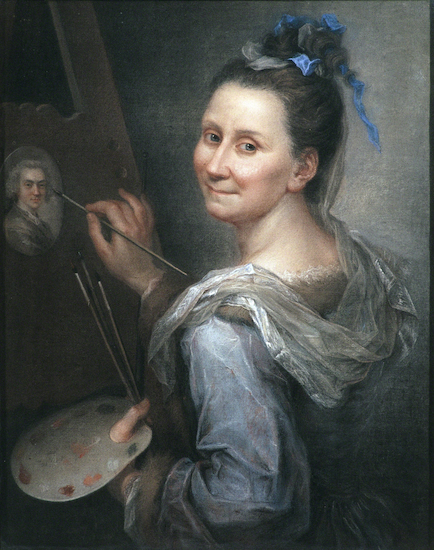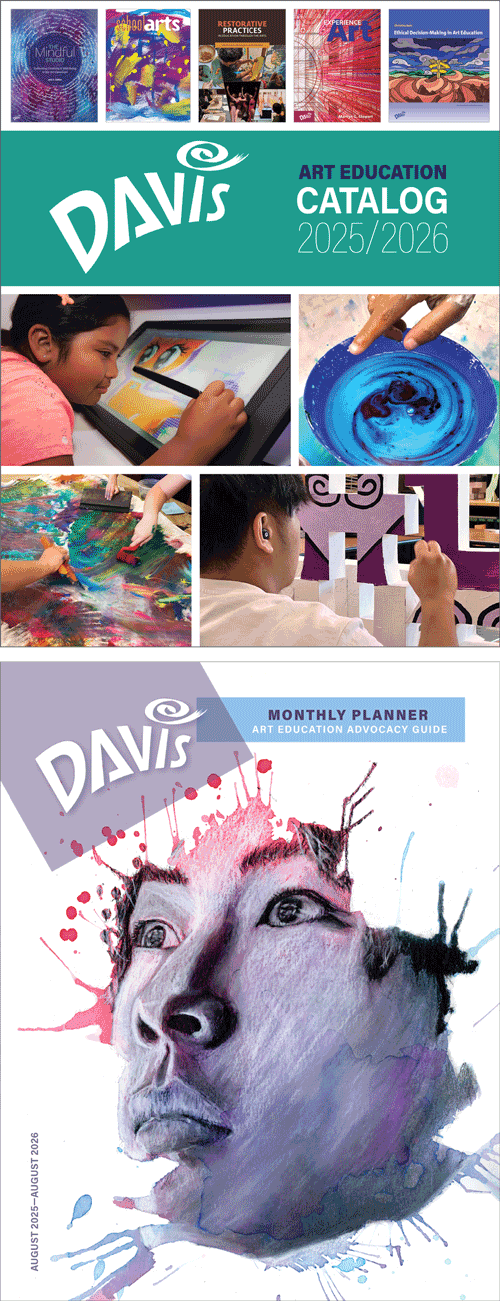Artist Birthday Giovanna Fratellini
By the late 1600s, there were many women artists who became professional artists with successful careers. Unlike most women artists, Giovanna Fratellini was trained by a professional artist who was not her father or a male relative.
Artist Birthday for 27 October: Giovanna Fratellini (1666-1731 Italy)
 |
| Giovanna Fratellini, Self-Portrait, ca. 1720, pastel on paper, 72 x 57 cm Galleria degli Uffizi, Florence, © 2025 Dr Ron Wiedenhoeft / Saskia Ltd (MIF-1160) |
Like the portraits of Rosalba Carriera, Fratellini's were realistic, but not naturalistic (following nature precisely). In both these artists' cases, however, they were unflinchingly naturalistic when it came to self-portraits. This is particularly noticeable in this self-portrait by Fratellini, who depicts herself working on a male miniature of her son Lorenzo that is very idealized and typical of the Rococo taste for courtly elegance.
Fratellini’s plain features and thin lips are a far cry from the extreme idealization (reduction of any physical flaws) of the upper class Italians whom she painted. This is most likely due to the fact that, as the official portrait painter of the Medici court in Florence, she was obliged to flatter the members of the nobility to acquire commissions. Her palette, too, resembles the typical Rococo pastel, high value palette of all Rococo painting. Like Carriera, Fratellini was admired for her use of pastels, a relatively new medium in portraiture during the 1700s.
Background
Between the 1400s and 1700s, education and training of women did not improve markedly, particularly those who showed artistic talent. Women with the drive to be artists had to train under fathers or male relatives who were established artists, or privately with professional artists if the woman happened to be of a high social class. Women were denied membership in the guilds which ensured continual patronage to artists. Despite the fact that some women did become widely respected, established artists, marriage was the main guarantee a woman had to acquire respect and status.
During the 1700s, the academy system was introduced to regulate artistic production and patronage. The academies established standards for educating and training artists, and hierarchies for subject matter and style. Few women were allowed into the academies. The easiest way for a woman to be trained as an artist was still with a male relative. However, this period witnessed the beginning of the practice of commissioning women artists to teach classes of young women students at the academies, and by the end of the 1700s, many women had gained acceptance in some of the European academies. It would take until the middle to late 1800s for women to be allowed to apply for the same academic training as their male counterparts.
Giovanna Fratellini was born Giovanna Marmocchini in Florence. As a child, an aunt introduced her at the court of the Grand Duke of Tuscany, Ferdinando II de' Medici (1610-1670) -- the same Medici family that ran Florence during the Renaissance. At court she was trained in painting and music. She learned miniature (portrait) painting from Ippolito Galantini (1627-1706) and the relatively new medium of pastel by Domenico Tempesti (ca. 1655-1737).
Fratellini excelled at portraiture, and her talent was much valued at the Medici court. She became a member of the Academy in Florence in 1706. Between 1717 and 1722 she was appointed as official portraitist for the new Grand Duchess of Tuscany Violante of Bavaria (1673-1731), wife of Ferdinando III de' Medici (1663-1713). With Violante's encouragement, Fratellini was able to paint portraits of members of the nobility from many other countries, including Britain and Poland. In Venice she met Rosalba Carriera (1673-1757), an artist who is credited with pioneering pastels for portraiture.
Correlations to Davis programs: Davis Collections -- Women Artists pre-1900; Davis Collections -- Artist Self-Portraits

Comments